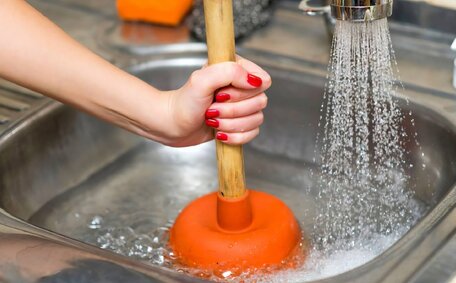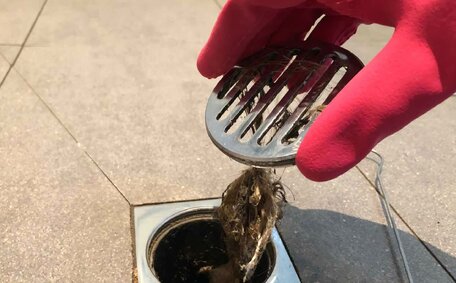What is a water booster pump system?
Fixed speed booster pumps increase water pressure in buildings with low mains supply to ensure effective functioning of plumbing fixtures and appliances.
These systems use electric boosters to raise mains water pressure, ensuring uniform water flow across the building.
Booster pumps are ideal for high-rise buildings, compensating for lost pressure on upper floors and supporting fire suppression, irrigation, and large-scale water needs. They ensure optimal water pressure and water distribution rates for consistent house water supply throughout your house, sufficiently catering to all plumbing fixtures.
A booster pump draws water from the municipal supply or storage tank, pressurises it, and delivers it into the building’s distribution system. The pump should have a capacity and size that must harmonize with the flow pressure and flow rate necessities during peak demand in water distribution systems.
When do you need a water booster pump system?
Several signs suggest you might need a booster pump, particularly if you’re considering installing one:
- Poor shower performance – Low domestic water pressure or fluctuating temperatures
- Toilets, taps or other fixtures slow to fill
- Ineffective garden hoses or irrigation systems
- Noticeable drop in water pressure on the third floor and other upper levels of multi-story buildings
- Insufficient pressure flow for fire suppression systems
If plumbing system pressure drops below the optimal range of 30 - 80 psi, a booster pump can enhance efficiency. If available pressure drops below 30 psi during periods of high demand, distinguishing how a pressure booster pump can elevate flow rate and pressure to suitable levels is important.
Matching the pump’s capacity with your building’s peak water pressure ensures system performance and reliability for residential and commercial settings.
Analyzing low water pressure issues
There are several potential causes of low water pressure in buildings:
- Inadequate municipal water supply – The property may suffer from insufficient pressure in the external mains water lines.
- Elevation issues, such as water pressure dropping approximately 0.4 psi per vertical foot due to roof tanks or distance from municipal connections, can result in up to 30% lower pressure on higher floors.
- Undersized building plumbing can cause significant issues - Internal pipe diameters that are too narrow restrict flow, leading to pressure loss.
- Corroded/clogged hot water pipes - Mineral buildup and corrosion in hot water systems decreases flow, lowering pressure over time.
Evaluate your booster pump’s effectiveness by timing how long it takes to fill a 1-litre jug, helping identify performance issues.
Turn on the tap fully and measure if it’s providing enough water as it takes to fill the jug, which can identify if there’s a booster pump need for pressure head issues. Convert this to litres per minute to determine your flow rate. Testing on various floors during peak usage helps accurately pinpoint where booster systems are needed.
If flow rates are below recommended levels, a correctly sized booster system can address inadequate pressure issues.
Types of water booster pumps
There are several types of booster pumps available to meet various pressure boosting requirements:
Single Stage Pumps
Selecting the suitable pressure booster pump with a single impeller is vital for enhancing water pressure and overall system efficiency. Self-priming pumps can increase pressure up to 140 psi and maintain a flow rate of approximately 19 to 473 litres per minute. Single stage booster pumps offer cost-effective solutions for scenarios that require improved water pressure.
Multi-Stage Pumps
Multi-stage pumps used to increase water pressure in staged increments, contain two or more impellers in a series. These robust units can manage discharge pressures exceeding 500 psi and handle flow rates from 10 to 750 gallons per minute. Heavy duty pump options, such as multi-stage variants, are ideal for larger establishments with expansive plumbing systems needing considerable pressure.
Variable Speed Pumps
Variable speed drives (VSDs) solve low flow problems by modulating pump speed to meet demand, thus improving water pressure. Output flow and pressure adjusts automatically based on water usage without activating on/off cycles. Speed drive vsd systems are effective for water distribution, with Drive VSD pumps, or variable speed drives, being energy efficient and preventing pressure fluctuations, even with higher initial investments.
Selecting a booster pump with a pump curve that matches your system’s requirements is essential for optimised water pressure and efficiency. When water pressure and flow rate specifics are paramount, consulting with an expert to correctly size and match pumps to your facility’s requirements is advised.
How do water booster pumps work?
Booster pumps operate with an electric motor that rotates an impeller to move water through the system. The impeller draws water out from the main supply into your booster pump, propelling it through the pressure outlet to move water at a heightened pressure.
Increased water velocity entering the pipes raises pressure by converting kinetic energy into pressure energy. Check valves ensure the boosted potable water from storage tanks only flows in one direction through the system.
If your building requires a booster pump to ensure at least 45 psi pressure for adequate flow, but the well water supply only provides 35 psi, the pump does its job by being installed parallel to the main line. By enhancing the 35 psi source, a water booster pump can elevate the supply to 45 psi, increasing the pressure to levels adequate for all fixtures and appliances.
Most booster pumps have pressure switches that activate the motor if pressure falls below a set point, then deactivate it once pressure slightly exceeds that point, enhancing flow consistency. This keeps the household water system pressurised within the desired range.
Key components and operation
Pressure Tank
The pressure tank, or water storage tank, holds water that moves through the system propelled by the booster pump. It acts as a water tank cushion to handle draws of water, preventing the pump from turning on and off rapidly during normal operation. A suitable tank can store a sufficient amount of water as determined by the water storage needs of the building.
Pressure Switch
The pressure switch monitors system pressure and signals the pump when to turn on and off based on pressure setpoints, keeping the system pressurised to the pressure desired level.
Check Valves
Check valves allow water to flow in only one direction, preventing backflow through the booster pump. This keeps the system working efficiently.
Pressure Gauge
Measurement devices, operating much like plates roll out critical data, display real-time water pressure levels on both intake and discharge sides of the pump. This allows monitoring functionality and adjustment if needed.
These components form a cohesive pumping system, working in unison to elevate incoming water pressure to stable, higher levels on demand, and store pressurised water moving water seamlessly for peak consumption periods.
Variable speed pumps and efficiency
Variable speed drives (VSDs) significantly enhance efficiency over constant speed models when boosting water pressure. By automatically adjusting the pump’s motor speed to match real-time water demand, variable speed pumps can speed water delivery and maintain constant pressure efficiently while minimising unnecessary operation cycles.
Booster pump technology can reduce energy use by as much as 30%. The soft start nature also decreases mechanical wear on components, extending service life. In large buildings with significant pressure requirements, the energy and maintenance savings from VSD pumps make for an efficient and wise investment.
Beyond energy efficiency, VSD pressure boosters provide smooth, steady water delivery at all times, preventing annoying fluctuations that can occur with standard on/off cycling pumps. This helps ensure reliable pressure and flow rate for optimal performance of all water fixtures and equipment.
Installing a water booster pump system
While professionals should typically install a booster pump system, those with plumbing skills can attempt a basic DIY installation, estimated to take about an hour.
It’s imperative to rigorously follow the manufacturer’s instructions and adhere to local plumbing codes. Key steps include:
- Select an appropriate location - Usually in the garage or an outdoor enclosed area close to the main water line entry point.
- Mount the pump unit securely to the floor or wall as specified.
- Connect the piping from the water supply line to the pump inlet and from the pump outlet to the plumbing system.
- Install a pressure tank with piping connections to ensure you can use water throughout the system as per instructions.
- Wire the pump to a nearby 240V power source and install an isolator switch.
- Programme the pressure switch according to required parameters.
- Turn on water and electrical supply to test operation and ensure no leaks.
- Re-check installations against instructions to confirm proper completion.
Professional consultation is recommended to ensure your specific needs for pressure, component sizing, and positioning are met. Improper installation can lead to leaks, pressure fluctuations or damage over time.
Regulations and recommendations
Installing water booster pump systems must comply with local plumbing regulations to ensure safety and reliability. Here are some key recommendations:
- Use a licenced plumbing professional when you need pump installations and for maintenance. Improper work could lead to issues down the track.
- Select and size the pump system according to your need for water supply as per AS/NZS 3500, the Plumbing and Drainage Code of Australia.
- Install a pressure limiting valve if booster system pressure exceeds 500 kPa as stipulated in regulations.
- Include an adequate expansion tank to allow for thermal expansion of water volume in the system.
- Ensure electrical connections and isolators adhere to AS/NZS 3000 electrical regulations.
For tailored guidance on selecting and installing a compliant water booster pump system for your property, contact our team at Strathfield Plumbing on 1300 349 338 or [email protected].





